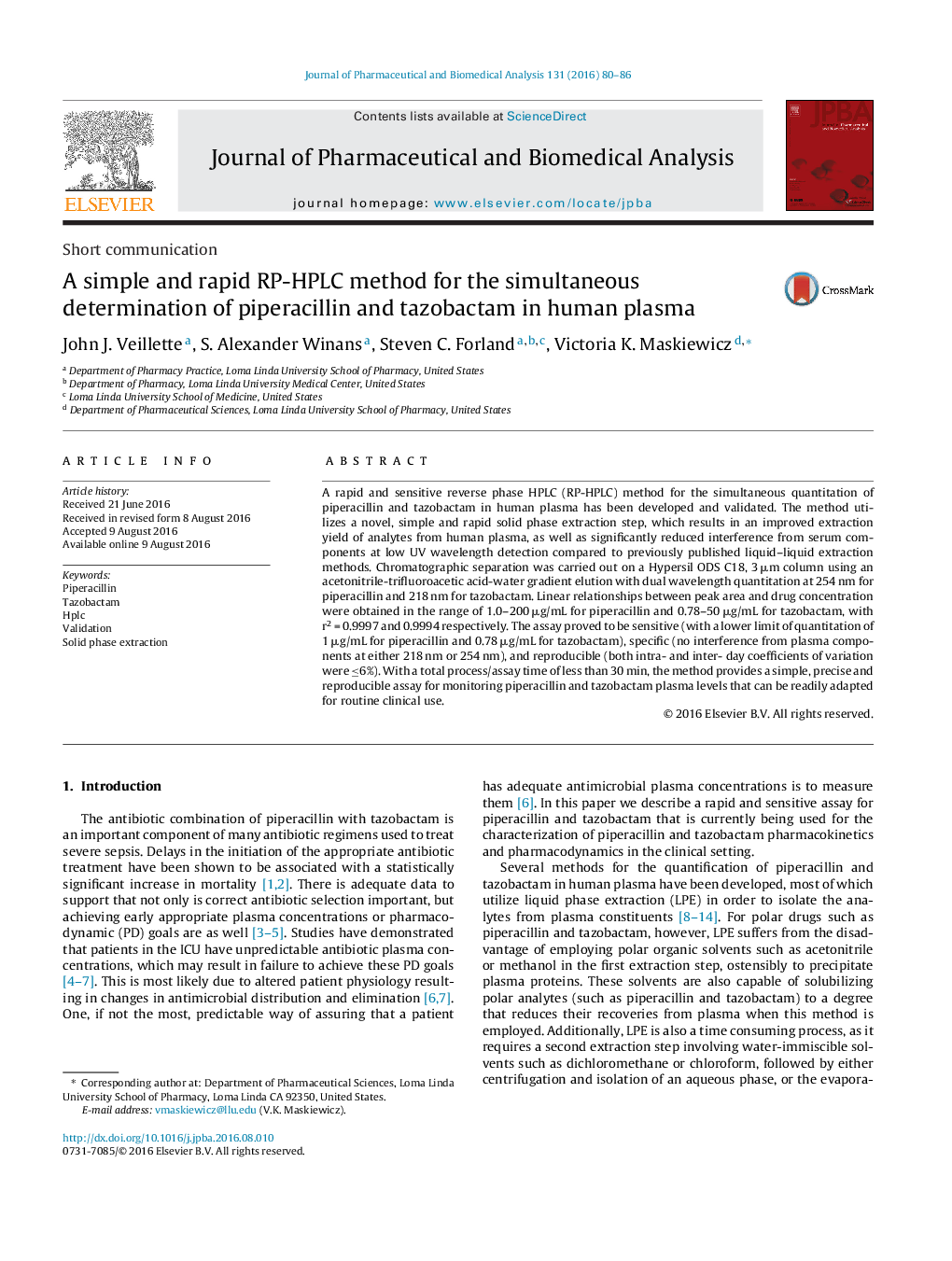| Article ID | Journal | Published Year | Pages | File Type |
|---|---|---|---|---|
| 1220127 | Journal of Pharmaceutical and Biomedical Analysis | 2016 | 7 Pages |
•A rapid and sensitive reverse phase HPLC method for the simultaneous quantitation of piperacillin and tazobactam in human plasma have been developed and validated.•The method uses solid phase extraction, resulting in higher recovery of analyte and improved baseline at low UV wavelength detection.•With a total process/assay time of less than 30 min, the method provides a simple, precise and reproducible assay for monitoring piperacillin and tazobactam plasma levels that can be readily adapted for routine clinical pharmacokinetic studies.
A rapid and sensitive reverse phase HPLC (RP-HPLC) method for the simultaneous quantitation of piperacillin and tazobactam in human plasma has been developed and validated. The method utilizes a novel, simple and rapid solid phase extraction step, which results in an improved extraction yield of analytes from human plasma, as well as significantly reduced interference from serum components at low UV wavelength detection compared to previously published liquid–liquid extraction methods. Chromatographic separation was carried out on a Hypersil ODS C18, 3 μm column using an acetonitrile-trifluoroacetic acid-water gradient elution with dual wavelength quantitation at 254 nm for piperacillin and 218 nm for tazobactam. Linear relationships between peak area and drug concentration were obtained in the range of 1.0–200 μg/mL for piperacillin and 0.78–50 μg/mL for tazobactam, with r2 = 0.9997 and 0.9994 respectively. The assay proved to be sensitive (with a lower limit of quantitation of 1 μg/mL for piperacillin and 0.78 μg/mL for tazobactam), specific (no interference from plasma components at either 218 nm or 254 nm), and reproducible (both intra- and inter- day coefficients of variation were ≤6%). With a total process/assay time of less than 30 min, the method provides a simple, precise and reproducible assay for monitoring piperacillin and tazobactam plasma levels that can be readily adapted for routine clinical use.
